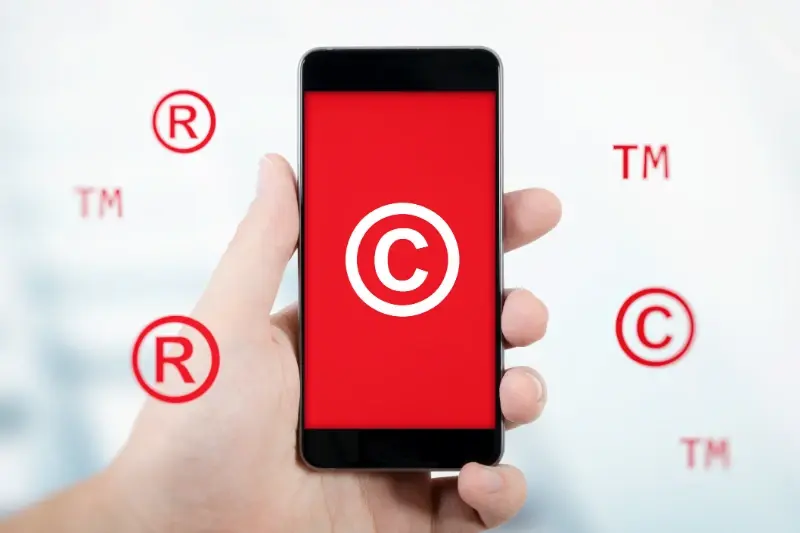From Idea to Launch: The Complete MVP Development Process
Did you know that 90% of startups fail within their first year? Not because they lack talent or funding, but because they build products nobody actually wants. That's a sobering statistic that keeps many entrepreneurs awake at night—and it's exactly why the MVP process exists. A minimum viable product isn't just a buzzword thrown around in startup circles; it's your safety net against building something that nobody needs.
The MVP development process transforms your brilliant idea into something real that people can touch, use, and provide feedback on. Think of it as your product's first conversation with the world. You're not trying to create perfection; you're trying to create something good enough to learn from. This approach has helped countless startups save time, money, and sanity whilst building products that actually solve real problems.
The goal isn't to launch a perfect product—it's to launch a product that teaches you what perfect actually looks like
Throughout this guide, we'll walk through each stage of the MVP development workflow, from that initial spark of an idea all the way through to launch day. Whether you're a first-time founder or someone who's been through the startup journey before, this process will help you build smarter, not harder.
Understanding MVP: What It Really Means
Right, let's clear this up once and for all. MVP stands for Minimum Viable Product—not Most Valuable Player like in sports! I know, I know, it sounds like business jargon, but stick with me here because understanding this concept properly will save you months of work and thousands of pounds.
An MVP is basically the simplest version of your app that people can actually use and find helpful. Think of it as your app's first draft—not the final masterpiece, but something that works and solves a real problem. The key word here is "viable" which means it needs to be good enough that people will actually want to use it.
What Makes a Good MVP
Your MVP should focus on solving one main problem really well, rather than trying to do everything at once. Here's what you need to include:
- Core features that solve your users' biggest problem
- Basic user interface that's easy to navigate
- Stable functionality that doesn't crash constantly
- Simple user registration and login system
- Essential security features to protect user data
The beauty of an MVP is that it lets you test your idea with real users without spending a fortune on development. You can see what works, what doesn't, and what features people actually care about—then build from there.
Planning Your MVP Strategy
Right, so you've got your brilliant app idea and you understand what an MVP actually is—now comes the bit that separates successful products from expensive failures. Planning your MVP strategy isn't just about deciding what features to include; it's about mapping out your entire development workflow in a way that makes sense for your startup journey.
The biggest mistake I see founders make is trying to plan everything at once. You can't. What you can do is identify your core user problem and work backwards from there. Start by writing down the single most important thing your app needs to do—not the ten most important things, just one. That's your foundation.
Write your core problem statement in one sentence and stick it somewhere visible. If you can't explain your app's main purpose in one sentence, you're not ready to build it yet.
Breaking Down Your Feature List
Once you've nailed your core problem, you need to be ruthless about feature prioritisation. I use a simple three-bucket system that works every time:
- Must-have: Features that solve your core problem—without these, your app is pointless
- Should-have: Features that improve the experience but aren't deal-breakers
- Could-have: Nice-to-have features that can wait until version two
Your MVP should only include must-have features. Everything else gets pushed to future releases. This isn't about being cheap—it's about being smart with your product development approach and getting real user feedback as quickly as possible.
Designing for User Experience
Here's where things get interesting—and where I see most people make their biggest mistakes. When you're building an MVP, there's this temptation to strip everything back so much that you forget people actually need to enjoy using your app. I've worked with clients who've gone so minimal that their users couldn't figure out what the app was supposed to do!
The trick is finding that sweet spot between simple and usable. Your MVP needs to solve the core problem beautifully, not just adequately. This means spending time on the user journey—how someone moves through your app from opening it to achieving their goal. Every tap, swipe, and scroll should feel natural.
Focus on the Core User Flow
Start with your main user story and map out each step. If you're building a food delivery app, that journey might be: open app → find restaurant → select food → pay → track order. Everything else is secondary. Polish this flow until it feels effortless.
Keep It Simple, Not Basic
Simple doesn't mean boring or ugly—it means clear and purposeful. Use familiar patterns that people already understand. Don't reinvent the wheel just because you can. Your users will thank you for making their lives easier, not more complicated.
Building the Technical Foundation
Right, let's talk about the bit that makes most non-technical founders break out in a cold sweat—the actual development workflow. Now, I've worked with plenty of startup teams over the years, and the ones who get this part right are the ones who understand that your MVP isn't about building everything perfectly; it's about building the right things well enough.
The secret sauce here is choosing your tech stack wisely. You want something that's reliable, scalable, and most importantly, something your team actually knows how to use properly. I've seen too many projects go sideways because someone decided they needed the latest, shiniest framework when good old reliable options would have done the job perfectly.
Core Features First
Start with your absolute must-haves—the features that make your product actually solve the problem you set out to tackle. Everything else can wait. Database design, API structure, user authentication—these are your foundations. Get them solid before you even think about those nice-to-have features.
The best minimum viable product is the one that solves a real problem with the least amount of code
Your development workflow should be all about rapid iteration and testing. Build something small, test it, learn from it, then build the next piece. This approach keeps you moving forward without getting bogged down in perfectionism—which, let's be honest, is the enemy of good product development.
Testing and Iteration Cycles
Right, here's where things get interesting—and where I've seen many teams stumble. Testing your MVP isn't a one-and-done affair; it's an ongoing conversation with your users that shapes your product's future. I always tell my clients that testing is like having a crystal ball, except instead of magic, you're using real user feedback to predict what will work.
The beauty of MVP testing lies in its simplicity. You're not trying to perfect everything at once—you're validating your core assumptions and learning what users actually want versus what you think they want. Trust me, there's often a big difference between the two!
Types of Testing That Actually Matter
During my years in app development, I've found these testing approaches deliver the most valuable insights:
- User acceptance testing with real people (not your mum or best mate)
- A/B testing different features to see what resonates
- Performance testing to catch technical hiccups early
- Usability testing to spot confusing user journeys
- Beta testing with a small group of target users
Each iteration cycle should focus on one or two key areas—don't try to fix everything at once. Collect feedback, analyse the data, make targeted improvements, then test again. It's a rhythm that becomes second nature once you get the hang of it.
Preparing for Market Launch
Right, so you've built your MVP, tested it with users, and made those all-important iterations based on their feedback. Now comes the bit that makes most founders break out in a cold sweat—actually putting it out there for the world to see! I won't lie to you, this phase can feel overwhelming, but the good news is that you've already done the hard work. Your MVP is ready, and now it's time to get it in front of real users.
First things first: you'll need to sort out your app store presence. Whether you're launching on iOS, Android, or both, those store listings are going to be your shop window. Write compelling descriptions that clearly explain what your app does and why people should care. Screenshots matter more than you might think—they're often the deciding factor for downloads. Make sure they show your app's key features in action, not just pretty static screens.
Getting Your Technical House in Order
Before you hit that publish button, double-check your analytics are properly set up. You'll want to track user behaviour from day one—how are people using your app? Where are they dropping off? This data becomes gold dust for your next iteration cycle. Don't forget about crash reporting too; nothing kills momentum like a buggy app that users can't rely on.
Start building buzz before launch day. Share your development journey on social media, reach out to your network, and consider a soft launch with a smaller audience first. This gives you one final chance to catch any issues before your big moment.
Launch Day and Beyond
Launch day isn't the finish line—it's really just the beginning of your startup journey. Your MVP will start generating real user data, feedback, and hopefully some revenue. Stay close to your users during those first few weeks. Respond to reviews, fix bugs quickly, and keep that development workflow moving. The beauty of the MVP process is that you're not done; you're just getting started with real market validation.
Conclusion
Building an MVP isn't just about creating a stripped-down version of your app—it's about learning what your users actually want before you spend months building something nobody needs. I've watched too many brilliant ideas fail because teams skipped this process and went straight to building their "perfect" product.
The beauty of MVP development lies in its simplicity. You start with the most basic version that solves your core problem, launch it to real users, and then improve based on their feedback. This approach saves you time, money, and the heartbreak of discovering your assumptions were wrong after you've already built everything.
Every successful app you use today started as an MVP. Facebook was just a simple directory for university students. Instagram began as a photo-sharing app with basic filters. They didn't launch with every feature you see now—they grew into those features based on what users actually wanted.
The key is to start small but think big. Your MVP is just the beginning of your app's journey, not the end destination. Focus on solving one problem really well, listen to your users, and iterate based on real data rather than guesswork. That's how you build something people will actually use and love.
Share this
Subscribe To Our Blog
You May Also Like
These Related Stories

5 Intellectual Property Mistakes That Could Kill Your App Business

How To Build Your First Mobile Game Without Going Broke





